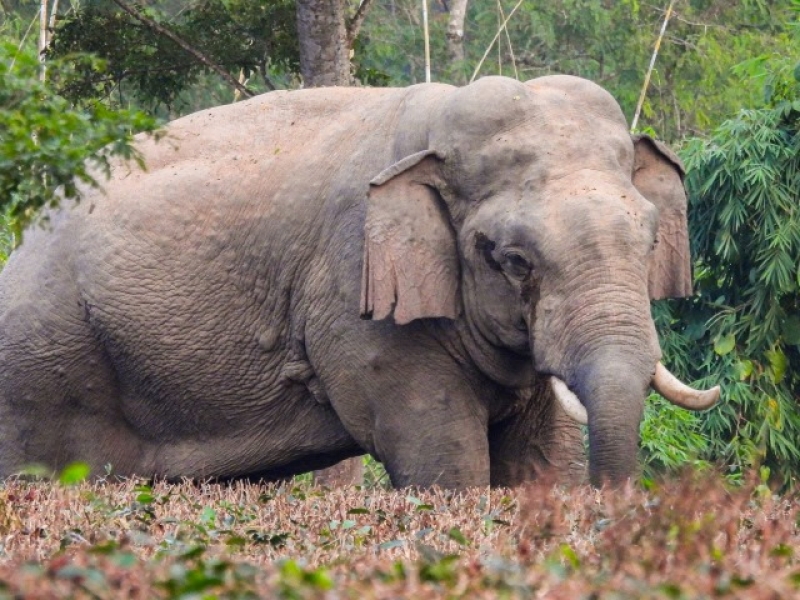- United States and Bangladesh Launch Money Laundering Bench Book |
- 6 BD peacekeepers killed, 8 hurt in attack on Sudan UN Base |
- Burglary at Hadi’s village home in Jhalokathi |
- Martyred Intellectuals Day on Sunday |
- Campaign from Jan to rein in overuse of antibiotics: Adviser |
The Week in Dialogue Earth, South Asia Edition

Elephant
In Sonai Rupai Wildlife Sanctuary, located in the Indian state of Assam, elephant herds roam the lush forests throughout the year. With abundant food and water, 30-40 square kilometres usually provide everything they need. But every year as October approaches, the herds travel down the Brahmaputra River following their historical migration pattern and venture into farmlands and tea plantations leading to encounters with humans. This marks the beginning of the Hathi (elephant) season.
In a commentary, Aniruddha Dhamorikar and David Smith from WWF-India write that local communities and forest officials have been trying to ensure peaceful coexistence by minimising conflicts between humans and elephants through solar-powered electric fences and deploying anti-depredation squads to monitor elephant movements. However minimising conflict remains complicated since human interventions through encroachment and deforestation have significantly eroded the elephants’ habitat forcing them to wander for food.
Similarly, human activities are also threatening Kashmir’s sensitive landscape. In a deep dive into the expansion of tourism in Kashmir's previously secluded regions, Athar Parvaiz examines how mass tourism has trumped the enforcement of environmental regulations.
Separately, we continue to closely monitor Bangladesh after the ouster of Sheikh Hasina’s government in August 2024. Over the past decade, India and Bangladesh substantially increased energy cooperation, and by 2023, Bangladesh had signed three deals to buy electricity from Indian power plants. But future energy cooperation between the two countries looks uncertain post Hasina’s ouster, reports Kamran Reza Chowdhury.
Bangladesh has a surplus installed capacity but needs to import power from India because a ‘dollar crisis’ has meant it cannot import fossil fuels to power all its plants. Hence, energy import from India is critical to its economic stability. In the future, though, experts suggest that the bulk of these imports should be from the renewable sector - from Bhutan and Nepal via India - to help the country transition.
As COP29 draws near, stakeholders are keenly observing if the Loss and Damage Fund will get operationalised. In an opinion piece, Ali Tauqeer Sheikh argues that for developing countries like Pakistan, understanding the interplay of the Loss and Damage Fund with its predecessors — the Warsaw International Mechanism and the Santiago Network — is crucial. Unfortunately, Pakistan's limited technical capacity and insufficient coordination among the representatives of these fundamental mechanisms have resulted in climate policies that are not informed by necessary technical assistance.
Learn more about loss and damage and what it means for South Asia in this explainer where I explore the extent of loss and damage the region may face and whether an adequate loss and damage fund is likely to materialise.
Thank you for reading. Please share this newsletter with a friend!
Source: https://mail.google.com/mail/u/0/#inbox/FMfcgzQXJsxmKdqBcjpdcmtSvbsDSWXx

